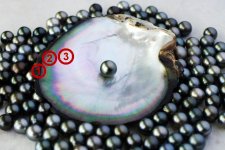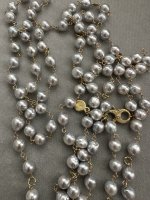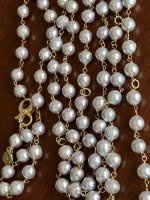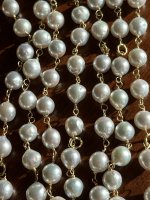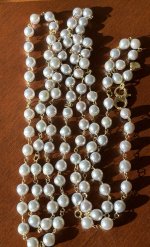Cultured Pearl Surface Quality Profiling by the Shell Matrix Protein Gene Expression in the Biomineralised Pearl Sac Tissue of Pinctada margaritifera
DOI:
10.1007/s10126-018-9811-y
Authors:
Carole Blay
Nucleated pearls are produced by molluscs of the Pinctada genus through the biomineralisation activity of the pearl sac tissue within the recipient oyster. The pearl sac originates from graft tissue taken from the donor oyster mantle and its functioning is crucial in determining key factors that impact pearl quality surface characteristics. The specific role of related gene regulation during gem biogenesis was unknown, so we analysed the expression profiles of eight genes encoding nacreous (PIF, MSI60, PERL1) or prismatic (SHEM5, PRISM, ASP, SHEM9) shell matrix proteins or both (CALC1) in the pearl sac (N = 211) of Pinctada margaritifera during pearl biogenesis. The pearls and pearl sacs analysed were from a uniform experimental graft with sequential harvests at 3, 6 and 9 months post-grafting. Quality traits of the corresponding pearls were recorded: surface defects, surface deposits and overall quality grade. Results showed that (1) the first 3 months of culture seem crucial for pearl quality surface determination and (2) Multivariate regression tree building clearly identified three genes implicated in pearl surface quality, SHEM9, ASP and PIF. SHEM9 and ASP all the genes
(SHEM5, PRISM, ASP, SHEM9) encoding proteins related to calcite layer formation were over-expressed in the pearl sacs that produced low pearl surface quality.re clearly implicated in low pearl quality, whereas PIF was implicated in high quality. Results could be used as biomarkers for genetic improvement of P. margaritifera pearl quality and constitute a novel perspective to understanding the molecular mechanism of pearl formation.
Bolding mine.
SHEM-# aka shell matrix proteins are implicated in the surface qualities of pearls. These are processes which invoke changes in growth types, namely from perio/myostracial > prismatic > nacreous > calcitic. When they are present at the time of graft, they accelerate rapidly, hence over-expression occurs. In nature, SHEMs (particularily SHEM9) is implicated as a
senescent trait (9 being the last order of the life cycle) in molluscs It's what induces crude calcite. The shells are old and stong, so the need to continuously create strong nacre, is reduced with age. After all, juvenile tissue has no immediate need to become highly calcitic, instead evolves through a more elegant process thus morphing accordingly over a greater window of time. In nature, nacre is all about strength and water tightness and little else. Alluring iridescence is merely incidental to it.
The only way to avoid early senescent traits in pearls is to not use over mature tissue during the graft, otherwise any part of the mantle would be acceptable to use,
but it's not and the primary reason why this is true. There are undoubtedly other reasons, but not greater reasons.
I thought your response to the photo I posted was that the dark organic matter was conchiolin, which can present as a dark lines within nacre. If that isn't what you meant, I misunderstood. I do understand the pearl growth process.
My comments about the yellow nacre again comes from Akamatsu's book. If you disagree with him, please share with us where you are getting this information. Can you post a link to a journal article or a book reference?
Conchiolin can be dark, almost black and opaque. It can also be clear and virtually transparent. Why the difference? For lack of a better description, lets compare it to urine. In the morning, it's dark and odorous, but later in the day it runs much clearer. That's because we rested for a period, then later became more anatomically metabolic over time. The same applies to molluscs. After a period of quiescence, they become more active on the other half of the growth cycle. This is evidenced by lattice patterns seen on shells. Patterns which seem to replicate themselves on subsequent growth cycles.
On the contrary, I agree with Akamatsu's observations on proteins and debris deposited in the sac. Though I admittedly did not read the article, no reference to a root cause for the issue is shown, insomuch as an observation after the fact.
We all know this to be true, but why? We know it's not gametes, because gametes can be controlled by other means. Likewise know which seasons are better to graft and which are better to harvest, so it's not that either. We also know, none of this is spontaneous. DNA and sophisticated cells do not magically appear out of nowhere. They always, exclusively divide and multiply from the annexed space into the into the adjacent, available space. Moreover, it's not careless deftness by grafters otherwise it would be a thing and I've yet to see a paper or farmer that suggests bluing is a direct cause of inept procedures. Flattening and smoothing grafts is a thing though. It's well known, this can break DNA, but that almost always results in granulation, which is a whole other issue. Can flattening/smoothing be the case here? Partially true perhaps, albeit inadvertently. Is it the primary reason? I have misgivings about that. In general, I doubt farmers needlessly tweak grafts for this very reason, much like a chef knows not to flip a pancake too early, lest the whole thing becomes undone.
That doesn't leave much wiggle room for other likelihoods. Jeremy made a good point, a strong one at that. Douglas concurs and so do I, but not to the extent this point is the exclusive or sole reason for the incidence of blue pearls. It's an outlier. The exception, not the rule. A retrospect in the absence onset. This is why perimortem analysis is far more significant than the retrospective analysis of pearls. Once the object is removed from it's situation, the greatest scientific value of it's onset is lost. 99% of my successful periostracial grafts were blue or otherwise highly calcitic, mainly because all of the sectionable mantle in pteriomorphs is over-mature anyway. I'd have to scape the gonoducts to gather new tissue, and that's tricky, if not impossible. Not for any other other reason than a hefty presence of undesirable SHEMs in the soft tissue. I get bright colours, smooth surfaces elegant nacre from the adductoral mantle though. Afterall,
it's a highly regenerative organ which lays up the surface for the muscle attachment points. It grows rapidly and very narrow and thin, which really limits productivity when using it as graft tissue.
Again, this supports tissue maturity issues with direct proportion to low quality pearls. Likewise, supports willy nilly selection criteria of the pallial mantle creating inferior pearls remain at the forefront of all other causes.
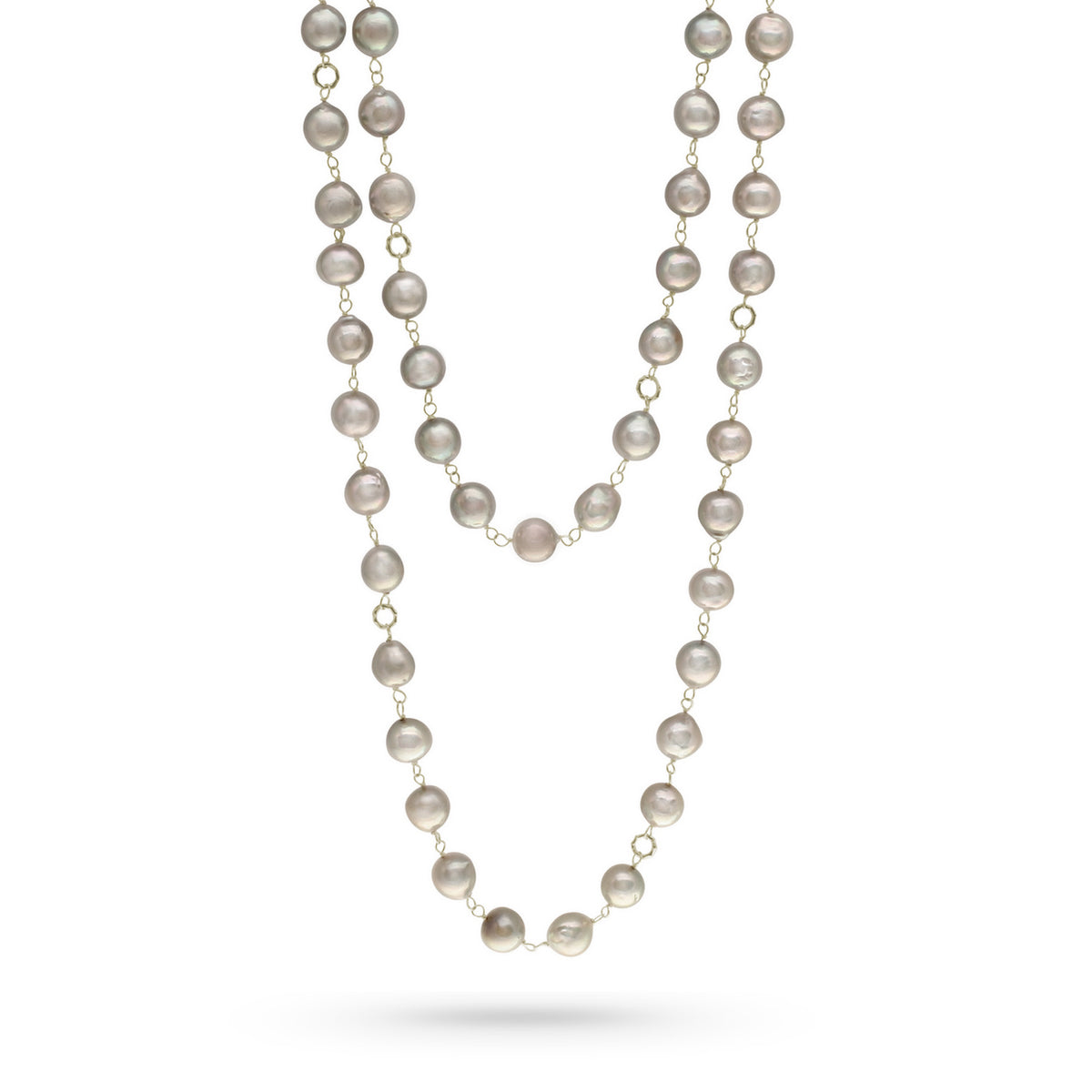
 dominiquecohen.com
dominiquecohen.com




